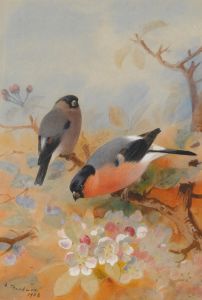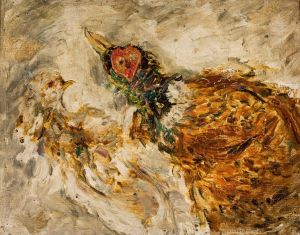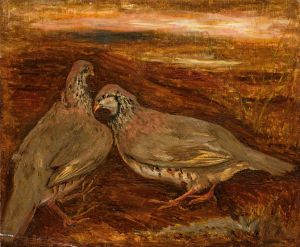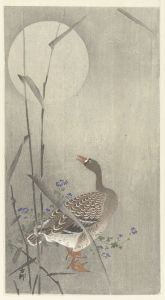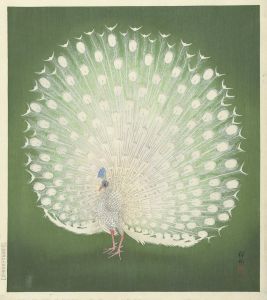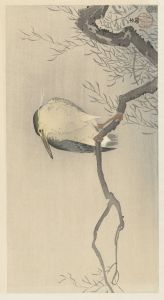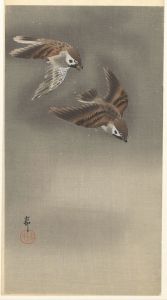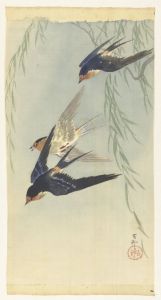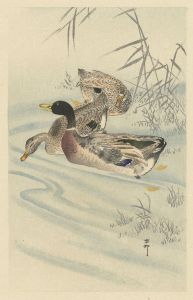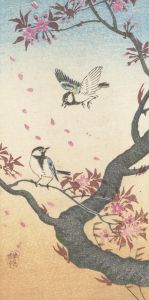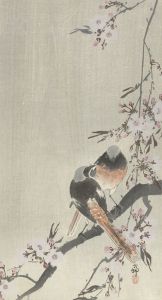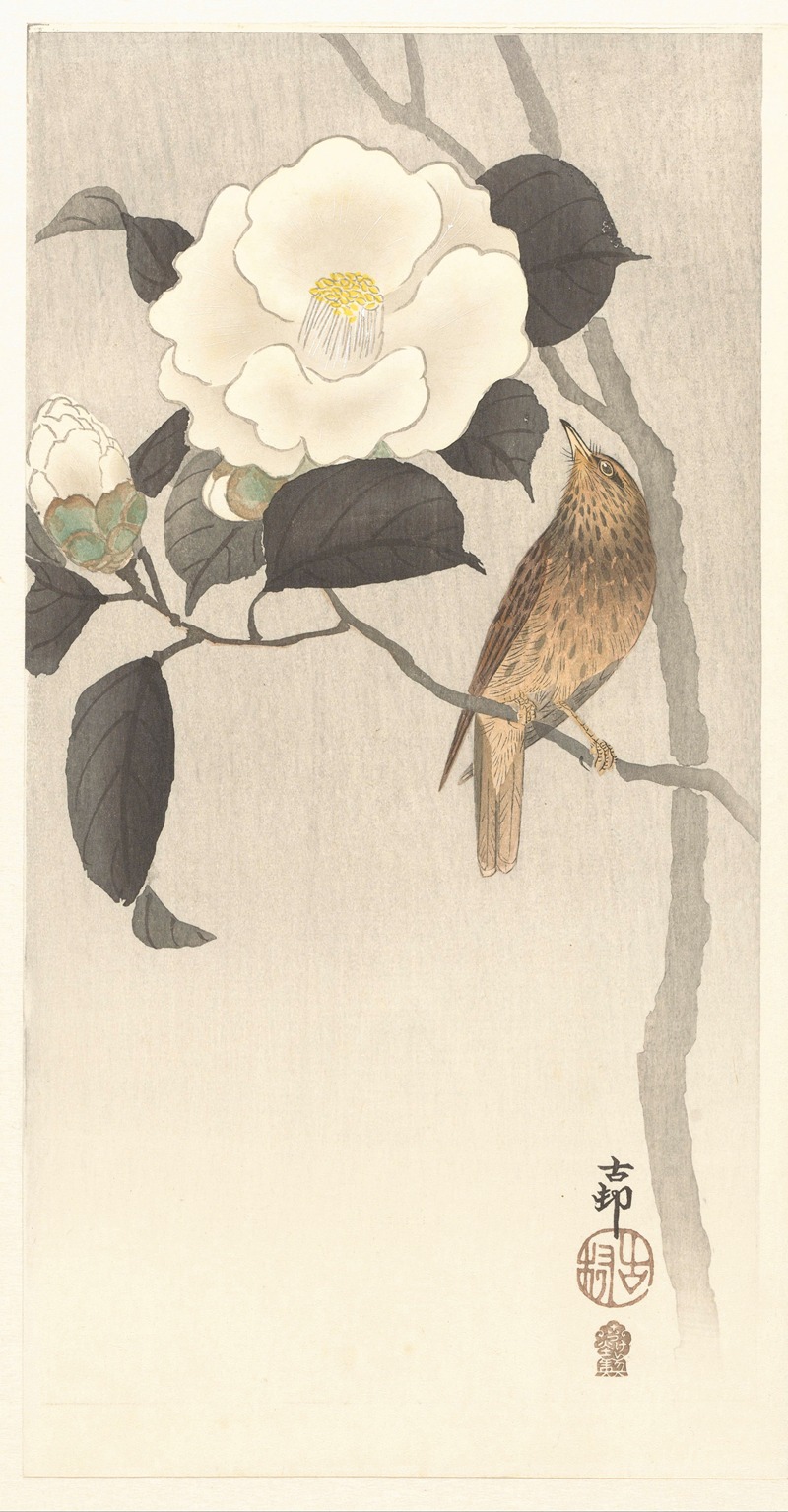
Songbird and flowering camellia
A hand-painted replica of Ohara Koson’s masterpiece Songbird and flowering camellia, meticulously crafted by professional artists to capture the true essence of the original. Each piece is created with museum-quality canvas and rare mineral pigments, carefully painted by experienced artists with delicate brushstrokes and rich, layered colors to perfectly recreate the texture of the original artwork. Unlike machine-printed reproductions, this hand-painted version brings the painting to life, infused with the artist’s emotions and skill in every stroke. Whether for personal collection or home decoration, it instantly elevates the artistic atmosphere of any space.
Ohara Koson was a prominent Japanese artist known for his work in the shin-hanga movement, which revitalized traditional ukiyo-e art during the early 20th century. His oeuvre primarily consists of kachō-e, or bird-and-flower prints, which are celebrated for their exquisite detail and vibrant colors. One of his notable works is "Songbird and Flowering Camellia," which exemplifies his mastery in depicting nature with elegance and precision.
"Songbird and Flowering Camellia" showcases Koson's ability to capture the delicate interplay between flora and fauna. The artwork features a songbird perched amidst the branches of a camellia bush in full bloom. The camellia, a flower native to East Asia, is depicted with meticulous attention to detail, highlighting the texture and subtle color variations of its petals. The bird, rendered with equal care, is poised gracefully, its feathers intricately detailed to convey a sense of realism and vitality.
Koson's technique in this piece reflects the influence of both traditional Japanese woodblock printing and Western artistic principles. The composition is balanced and harmonious, with a keen sense of asymmetry that is characteristic of Japanese aesthetics. The use of color is particularly noteworthy; Koson employs a palette that is both vivid and restrained, allowing the natural beauty of the subjects to shine without overwhelming the viewer.
The shin-hanga movement, of which Koson was a key figure, sought to breathe new life into the ukiyo-e tradition by incorporating Western techniques such as perspective and shading while maintaining the quintessentially Japanese focus on nature and everyday life. Koson's work, including "Songbird and Flowering Camellia," is a testament to this synthesis, as it combines the best of both worlds to create art that is both timeless and innovative.
Koson's prints were widely appreciated both in Japan and abroad, particularly in the United States and Europe, where there was a growing fascination with Japanese art in the early 20th century. His works were often exported, contributing to the international appreciation of Japanese aesthetics and influencing Western artists who were inspired by the simplicity and elegance of Japanese design.
"Songbird and Flowering Camellia" is a fine example of Koson's ability to convey the ephemeral beauty of nature. The print invites viewers to pause and appreciate the intricate details and serene composition, offering a moment of tranquility and reflection. It is a celebration of the natural world, rendered with a sensitivity and skill that has ensured Koson's place as one of the foremost artists of the shin-hanga movement.
Today, Ohara Koson's works, including "Songbird and Flowering Camellia," continue to be admired by collectors and art enthusiasts around the world. They are frequently featured in exhibitions and are held in the collections of major museums, serving as enduring examples of the beauty and artistry of Japanese woodblock prints.






